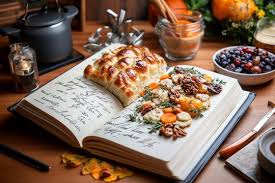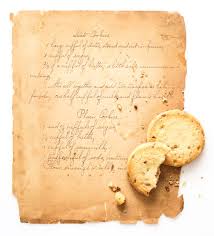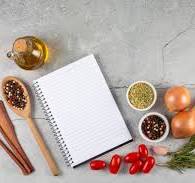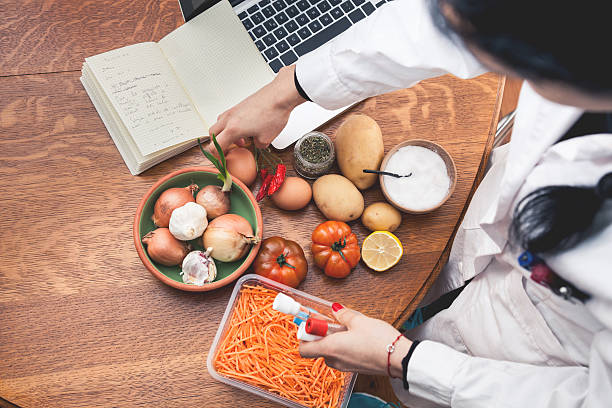
In an era where online cooking channels dominate, the sentimental value of handwritten recipes is often forgotten. Let’s explore how these personal treasures offer more than just culinary instructions.
Introduction: A Lost Tradition in the Digital Age
The world of cooking has evolved rapidly, with online platforms like YouTube, Instagram, and TikTok now providing easy access to thousands of recipes with the click of a button. From professional chefs demonstrating complex techniques to home cooks sharing their kitchen hacks, the digital age has made recipes more accessible than ever. In the midst of this culinary revolution, however, there’s one tradition that’s quietly fading away: the handwritten recipe.
For many, recipes passed down by loved ones, scribbled in a grandmother’s handwriting, or carefully transcribed from a cherished family cookbook, hold far more than just cooking instructions. They represent a connection to the past, a piece of family history, and a tangible link to cherished memories. But in a world dominated by online cooking tutorials, are these handwritten treasures still valued? This article delves into the overlooked value of handwritten recipes and why they should not be forgotten in the rush toward digital convenience.
The Warmth of the Handwritten Word
In today’s fast-paced digital world, where recipes are often pulled up in seconds with a quick search, handwritten recipes offer a kind of intimacy that online platforms can’t replicate. There’s something deeply personal about seeing a family member’s handwriting on the page—the flourishes of a beloved aunt’s cursive or the ink stains left behind from years of use. Every smudge and tear tells a story of love, care, and shared moments in the kitchen.
Handwritten recipes evoke a sense of nostalgia that an online video or blog post cannot. They carry the scent of past meals, the sounds of family gatherings, and the warmth of a shared experience. These recipes are not just about food—they are about connection. The process of handwriting a recipe, whether it’s for a special occasion or a weeknight meal, is an act of love. The care that goes into writing down a beloved dish is a reflection of how much that dish means to the person sharing it.
Handwritten Recipes: A Bridge Between Generations
Handwritten recipes often serve as a bridge between generations, linking the past to the present in a meaningful way. Many of us remember watching our mothers or grandmothers cook in the kitchen, observing their techniques, and perhaps even scribbling down notes of their own. These recipes, passed from one hand to another, carry with them the lessons of family traditions, culture, and values.
In an age where we might never meet the creators of our favorite online recipe videos, handwritten recipes are a tangible link to the people who shaped our culinary knowledge. A dish like grandma’s famous apple pie or your father’s secret chili recipe is more than just a meal—it’s a family heirloom. When we cook from these handwritten recipes, we’re not only recreating a dish; we’re recreating memories and honoring the legacy of those who came before us.
The Beauty of Imperfection
One of the most beautiful aspects of handwritten recipes is their imperfections. Unlike the polished, professional recipes found online, handwritten ones often carry small errors, crossed-out ingredients, or slight modifications made over time. These imperfections are a testament to the evolution of a dish. The way a cook has adjusted measurements, added a personal twist, or even scratched out an ingredient reflects the organic nature of cooking itself.
When we look at a handwritten recipe, we’re reminded that cooking is not about perfection but about creativity, experimentation, and adaptation. A recipe that has been passed down for generations is rarely exactly the same as it was when it was first written. It evolves as the cooks who use it evolve, making each version a reflection of the person cooking and the context in which the recipe is being prepared. The subtle changes in the handwriting, the faded ink, and the notes in the margins all add to the rich history of the recipe.

The Digital Divide: Online Cooking Channels vs. Handwritten Recipes
While online cooking channels have revolutionized the way we learn to cook, they also present challenges that handwritten recipes do not. For one, online recipes can often feel impersonal,lacking the warmth and context that a handwritten note provides. A video tutorial may teach you how to make a dish, but it rarely tells you why that dish is important or what memories are associated with it. In contrast, handwritten recipes often come with stories—stories of family gatherings, celebrations, and moments of love that aren’t captured in digital spaces.
Moreover, the convenience of online recipes comes with its own drawbacks. Algorithms may recommend dishes based on your past searches, but they also create a sense of disconnect, making it easy to forget the personal significance of what we cook. Searching for a recipe online can sometimes feel like flipping through a cookbook in a library—a search for something specific but detached from any emotional connection. In contrast, the handwritten recipe is like a piece of home, always there, always accessible, and always ready to tell its story.
The Ritual of Writing Recipes
In a world where everything seems to be instant, there’s a certain beauty in the ritual of writing down a recipe by hand. It encourages mindfulness and attentiveness. The act of transcribing a recipe from a beloved family member, or writing down a new dish after you’ve perfected it, allows for a deeper connection to the process of cooking. Writing down a recipe is a form of preservation, a way of keeping traditions alive for future generations.
While online recipes can easily be saved to a phone or bookmarked on a computer, there’s something enduring about the physical act of writing. A handwritten recipe is a tangible objectsomething you can hold and pass down, something that doesn’t rely on technology. In a way, it’s a form of resistance to the fleeting nature of digital content, offering a more enduring connection to the food we love.
The Future of Handwritten Recipes
As the digital world continues to expand, we must consider the role of handwritten recipes in preserving our culinary heritage. While online cooking channels offer a wealth of knowledge and convenience, they cannot replace the unique value of handwritten recipes. These recipes are an important part of family traditions, cultural legacies, and personal memories. As we embrace the future of cooking, it’s essential to keep the past alive through these handwritten treasures.
Whether it’s a recipe passed down from a grandparent, a personal creation shared with love, or a dish that’s been perfected over the years, handwritten recipes serve as a reminder of where we’ve been and who we are. They carry more than just ingredients; they carry stories, memories, and the essence of the people who shared them.

Conclusion: Cherishing the Legacy of Handwritten Recipes
In a world where online cooking channels and digital recipes are at our fingertips, the value of handwritten recipes cannot be overstated. These recipes are more than just instructions—they are legacies, connections, and cherished memories. They represent the love and care of those who came before us and provide a personal, tangible link to our culinary heritage.
While online platforms may offer convenience and endless variety, it’s important to remember that the handwritten recipe carries something that no digital platform can: authenticity, sentimentality, and a deep connection to family, tradition, and personal history. By preserving and cherishing handwritten recipes, we ensure that the stories and love that come with them are never forgotten.
Q&A: Handwritten Recipes in the Digital Age
Q1: What makes handwritten recipes more special than digital recipes?
A1: Handwritten recipes carry personal stories, memories, and connections to family and tradition. The imperfections and evolution of these recipes make them unique, offering a warmth that digital recipes lack.
Q2: How do handwritten recipes bridge generations?
A2: Handwritten recipes connect generations by passing down family traditions and cultural practices, allowing younger cooks to learn from their ancestors and maintain ties to their culinary heritage.
Q3: Are handwritten recipes becoming obsolete in the age of online cooking channels?
A3: While digital cooking platforms are popular, handwritten recipes remain valuable for their sentimental, personal, and enduring qualities. They preserve family legacies that can’t be replicated by online tutorials.
Q4: Why do handwritten recipes carry emotional value?
A4: Handwritten recipes are infused with love, care, and memories. They are often tied to important family moments, making them more meaningful than digital instructions, which can feel impersonal or transactional.
Q5: Can handwritten recipes still be relevant in modern cooking?
A5: Yes, handwritten recipes remain relevant as they represent authenticity, tradition, and connection. They provide a more personal cooking experience and preserve the essence of family heritage amidst the convenience of digital platforms.
